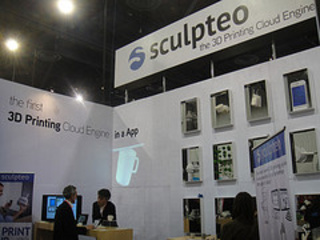3D Printing Will become Common.
Published on 19 December 12
2931
0

A number of high-profile news and technology blogs have recently been covering a technology known as 3D printing. Perhaps the height of this stint in the limelight was a recent Wired magazine cover article featuring a 3D printer. Most of these articles mention that the technology is still far from the reach of consumers, but then go on to talk about how popular this is becoming, how it's more accessible than ever, and how it will soon be a common household item. Whatever the adoption timeline for 3D printing, it's sparking interest from many readers.
3D Printing Is Not As New As You Think
Original 3D printing technology is actually fairly old, dating back to 1995. Its older incarnations, however, were very expensive and only of a limited industrial use. Newer printers are aimed at being more consumer friendly, although they're not quite to the point of being targeted at the average consumer. High prices, complex software, and limited uses are barriers that 3D printers most cross before they can gain mainstream acceptance. 3D printers work by printing many layers of thin 2D material, usually a plastic like substance, over each other to gradually build upwards a 3D product.
Becoming a Household Product
Companies producing 3D printers look forward to the day when these products become a household item. Increasing usership has the potential to lead to a nearly unlimited stream of innovation. Companies hope that additional users will bring with them creative uses for 3D printers, which will speed market penetration as it becomes more useful. Once the technology begins to gain traction this way, more people will see the use for it and invest it these printers. This of course leads to more sales, making it cheaper to produce the technology, and creating a cycle of growth.
Several companies already produce 3D printers. Older companies produce industrial sized 3D printers, while new startups aim to sell at average consumers. One interesting take on this is by Shapeways, founded in 2007. They offer a print-on-demand service that takes CAD files uploaded by customers and prints designs at their central facility, then ships them to the buyer. This service allows creative enthusiasts who might not normally have access to 3D printers to get involved in the process and contribute ideas. An online marketplace offers popular designs to other customers who don't know how to use the required CAD program. Designers are available to create necessary CAD files for people with ideas but lack of technical know-how.
3D Printing For The Average Consumer
RepRap, another online 3D printer store, aggregates products for several consumer end 3D printer makers, and aims to bring 3D printing products to the average consumer. Although the printer companies themselves hope for consumer adoption, they mostly target their marketing efforts at industry and business.
Few 3D companies or articles suggest that this technology will actually be a household item soon. All of them hope it will be, and no one argues the fact that it is on track to be a widely used item someday in the indeterminate future. This technology does have the potential to drastically change the future of product production, and pending crossing a few barriers it will be easily available, thus the reason for all the hype.
-----
Derek often likes to blog about new technology and gadgets. He also enjoys blogging about new smart phone devices and giving reviews on them. The article above is for new jersey web development. (License: Creative Commons image source)
This review is listed under
Digital Media & Games
and Hardware
Community
Related Posts:
Post a Comment

.jpg) Greg
Greg


